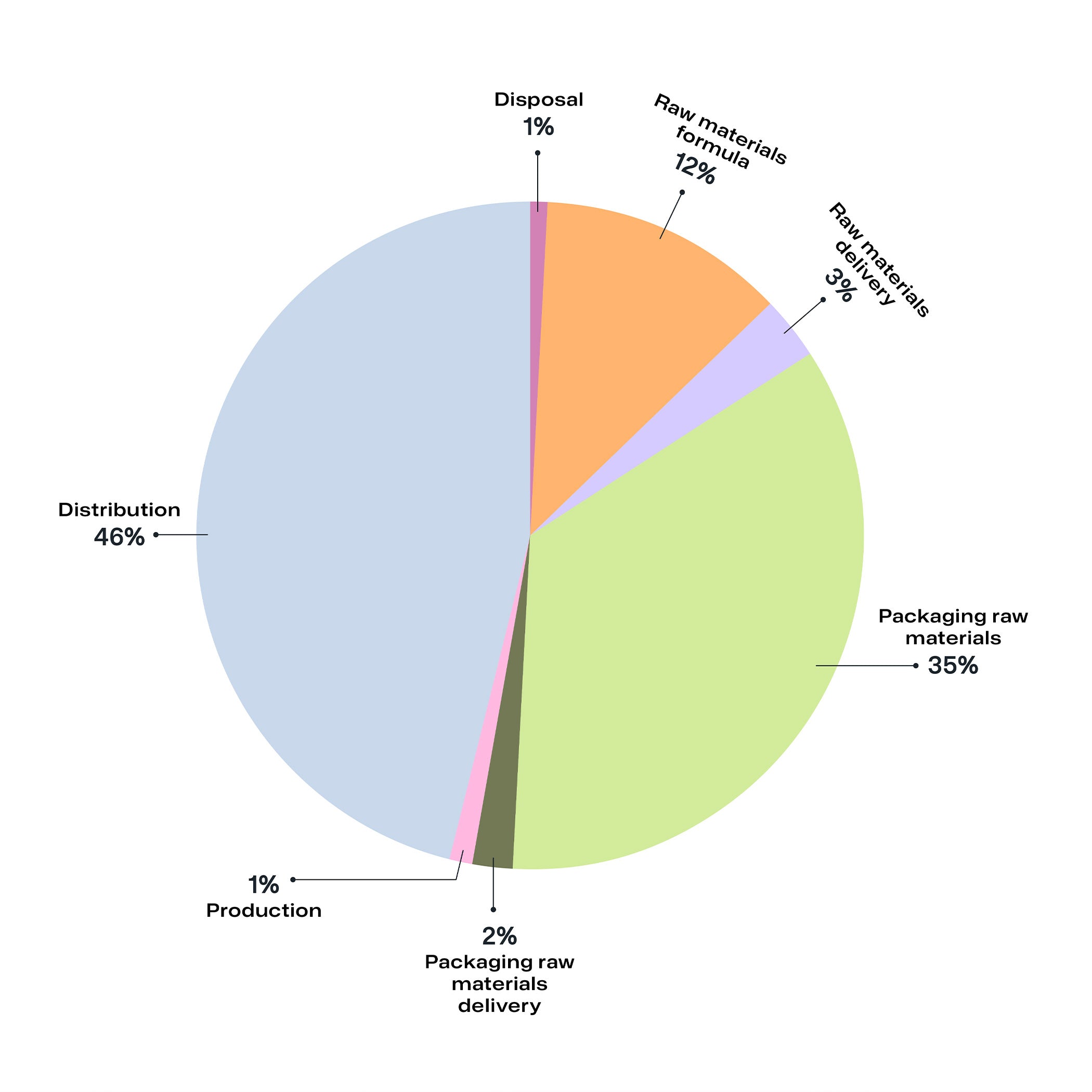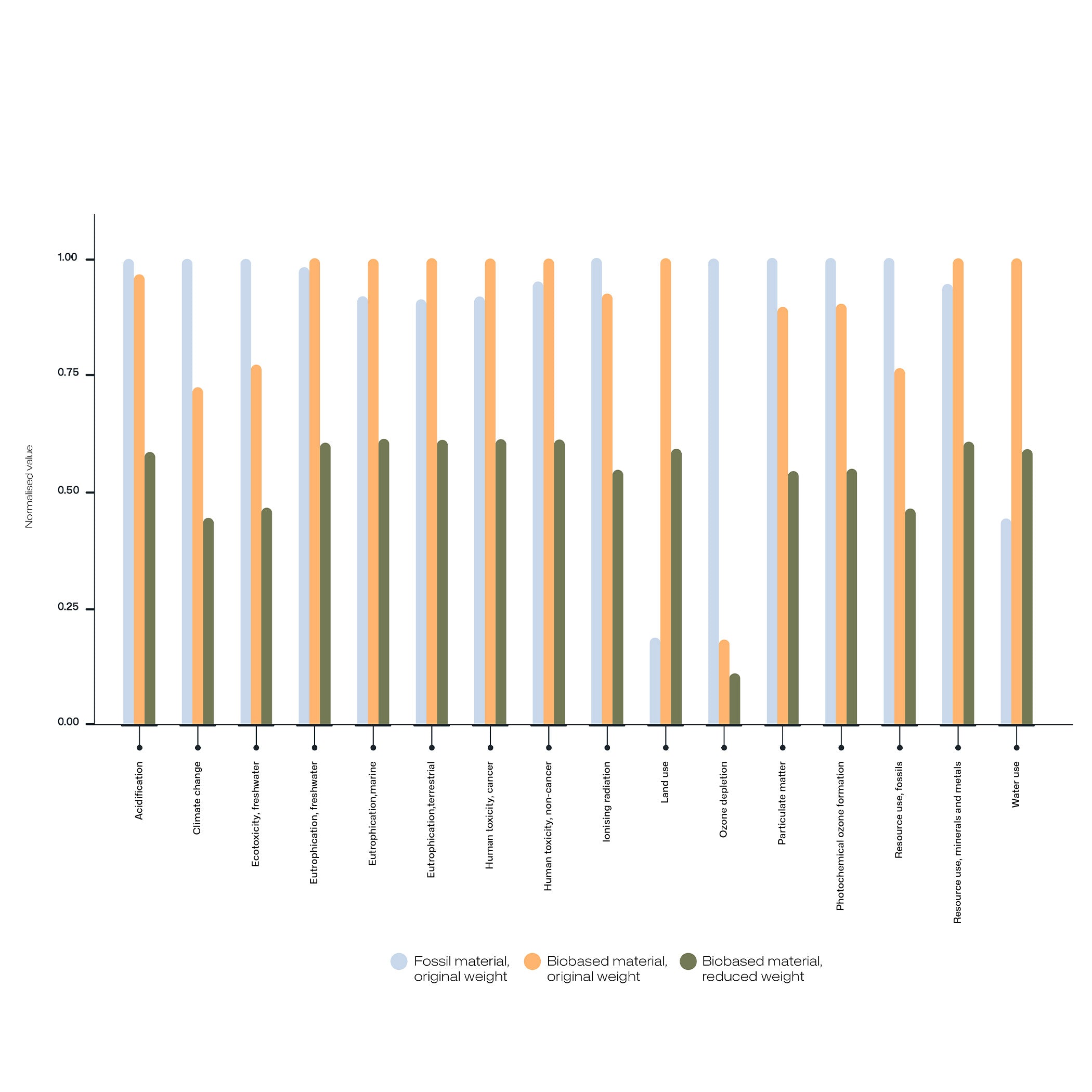Product carbon footprint pre-study
LUMENE is presenting the results of the PCF (product carbon footprint) calculation that was used to identify the environmental hotspots of one of LUMENE’s most sold product, 50 ml moisturisers. The PCF study's main goal was to calculate the carbon footprint of moisturiser products and identify the environmental hotspots in the value chains for these products through a cradle-to-grave approach. The hotspot analysis was used as a basis for improving LUMENE’s product carbon footprint. The study considered raw materials, meaning cosmetic ingredients and packaging materials, manufacturing including production resources and waste, distribution, and disposal. The third-party calculation was performed according to the international standard “The Greenhouse Gas Protocol: A Product Life Cycle Accounting and Reporting Standard, GHG Protocol”.
The PCF study revealed that the biggest environmental hotspots are transportation and packaging, with a significant impact on carbon emissions. Packaging raw materials contribute to 35% of the overall environmental burden of the product, while cosmetic ingredients account for 12%. This finding confirmed to LUMENE the importance of reducing the environmental impact of product packaging, particularly in terms of carbon emissions. Even before the study, we had set packaging sustainability objectives in 2018. LUMENE aims to reduce plastic packaging by 20% from the 2018 baseline by the year 2025 as this is the most efficient way to reduce the environmental impacts. Reducing the packaging weight and the amount of packaging materials remains the most effective strategy to achieve this goal.

Figure:The shares of different life cycle stages in terms of emissions in the 50ml moisturizer PCF study.




